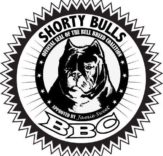 As president of the BBC and the Founder of Shorty Bull, I do everything within my control to keep our breed on track and moving forward. It seems lately we’ve had a lot of inquiries about foundation breeding’s and accepted Shorty Bull colors, and patterns.
As president of the BBC and the Founder of Shorty Bull, I do everything within my control to keep our breed on track and moving forward. It seems lately we’ve had a lot of inquiries about foundation breeding’s and accepted Shorty Bull colors, and patterns.
I would like to announce the BBCs stance on Foundation Breeding’s. Foundation Breeding is necessary to build a breed and it should be used to bring in new blood, preserve traits or reinforce traits that are being lost. Foundation breeding is not for beginners, as its purpose must be completely understood along with the risks of involved. Risks can be lessened by the complete dismissal of 1year old’s that do not fit within the requirements set forth in the breed standard. Foundation breeding’s require ample space as puppies will not be officially evaluated until the age of 1 year.
Shorty Bulls are not created by breeding other breeds to a Shorty Bull and calling it such. The reasoning behind the 1 year waiting period is to ensure that the dogs bred, or fitting the breed standard, in type, temperament, and overall soundness. This is also why there must be an approval process of which individual dogs can be used, as dogs may produce 1, or 2 dogs that will be accepted, but their individual type will be lacking and introducing said dogs to the gene pool can be more damaging, than beneficial in the long run.
Any person considering Foundation Breeding must have preapproval BEFORE the breeding is done.
Pictures (Front, Side, Rear, Top) as well as videos moving towards camera, away, and displaying side gait, of Sire and Dam must be presented at time of applying for F1 approval.
Upon completion of approved breeding all pups must be accounted for, via number of pups and pictures. Upon year old physical examination all dogs deemed unworthy of FI status, or meeting necessary requirements will have to be altered (spayed/neutered) these dogs will no longer be eligible to be used in F1 programs. The dogs approved will be eligible to be shown as well as bred.
Anyone considering Foundation Breeding’s MUST SUBMIT A RESUME PRIOR TO BREEDING. Said resume shall be typed and shall include a detailed summary of breeding experience, your personal goals for the foundation breeding you propose and a detailed explanation of your plans with each resulting puppy. Lastly, explain how this particular F1 breeding helps the Shorty Bull breed as a whole.
Resumes will be reviewed by a panel of master breeders and preapproval will be given on an individual basis by BBC. F1 breeding’s that are deemed beneficial to the breed will be monitored and evaluated by BBC and the breeder for the first year and final decision on acceptance will be determined by BBC.
In an effort to protect the integrity of the breed at this time the BBC will not accept foundation breeding’s from any other registry.
Colors- BBC accepts all colors WITH THE EXCEPTION OF Black and Tan, Merle or Tri Markings in any shade

